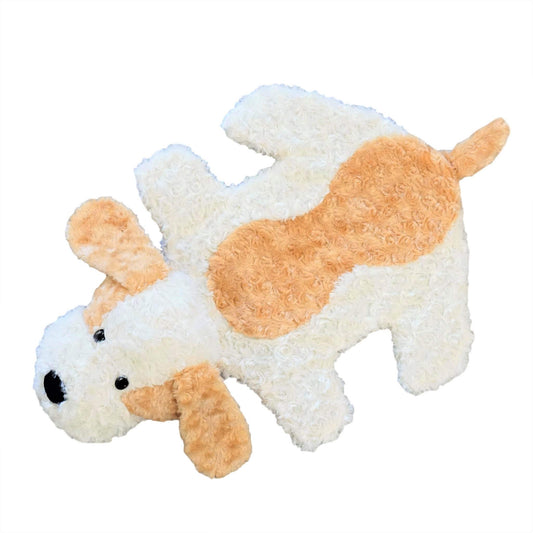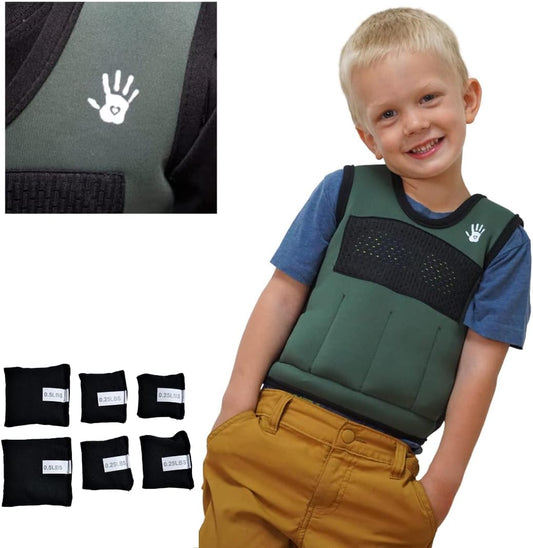Introduction:
Weighted vests are sometimes used as part of sensory integration therapy for children with ADHD and other sensory processing disorders. The idea is that the added weight provides deep pressure input, which may have a calming and organizing effect on the nervous system.
ADHD stands for Attention Deficit Hyperactivity Disorder. The remedy for such a disorder, specifically in kids, can be removed by introducing Weighted Vests in their lives.
While some anecdotal evidence suggests that weighted vests can be beneficial for certain children with ADHD, scientific research on the topic is limited, and results are mixed. It is essential to note that the effectiveness of weighted vests can vary from individual to individual, and what works for one child may not work for another.
If you are considering using a weighted vest for a child with ADHD, it is crucial to consult with a healthcare professional or occupational therapist who specializes in sensory processing issues. They can guide whether a weighted vest may be appropriate for your child and how to incorporate it into their overall treatment plan. Weighted vests should be used under the supervision and guidance of qualified professionals to ensure safety and effectiveness.
What should you not give a child with ADHD?
Well, certain aspects of nutrition should be avoided when it comes to ADHD in a child. These are mentioned below:
- Artificial Flavoring and Preservatives. Roughly 5 percent of children with ADHD are sensitive to chemicals in food.
- Processed sugar is a simple carbohydrate that provides quick bursts of energy and burns out quickly.
- Food Dyes.
Also, when it comes to managing ADHD (Attention Deficit Hyperactivity Disorder) in children, it is recommended to avoid certain things or use caution with others. Here are some considerations:
- Artificial additives and food colorings.
- Excessive sugar.
- Processed foods.
- Lack of structure and routine.
What does a weighted vest do for sensory issues?
Weighted vests provide deep pressure stimulation to the body, which can help kids with sensory issues better regulate their emotions and behaviors.
A weighted vest is often used as a sensory tool to provide deep touch pressure (DTP), which can have a calming and organizing effect on the Sensory System. Deep touch pressure is a type of sensory input that involves firm, gentle pressure distributed across the body. This pressure can help regulate the sensory system and contribute to a sense of calm and focus.
It is important to note that while many individuals find weighted vests beneficial, sensory preferences can vary widely among individuals. Some may find the sensation of a weighted vest uncomfortable, so it is crucial to monitor and respect kids' responses.
What is the best exercise for kids suffering from ADHD?
Physical activity can be beneficial for children with ADHD (Attention Deficit Hyperactivity Disorder), as it helps in reducing hyperactivity, improving focus, and promoting overall well-being. The best exercise for kids with ADHD is one that combines cardiovascular activity, strength training, and activities that require focus and coordination. Here are some of the most effective exercises for the kids with ADHD:
-
Aerobic Exercises:
- Running or jogging: Helps in burning excess energy.
- Jumping rope: Enhances coordination and balance.
- Swimming: Provides a full-body workout and is low-impact.
- Cycling: Improves cardiovascular fitness.
-
Strength Training:
- Body weight exercises: Push-ups, squats, and lunges help build strength.
- Climbing: Activities like rock climbing or tree climbing engage various muscle groups.
-
Team Sports:
- Soccer, basketball, and other team sports encourage social interaction, teamwork, and coordination.
- Martial arts: Combines physical activity with discipline and focus.
-
Yoga:
- Yoga can help improve concentration, balance, and flexibility.
- It also promotes relaxation and stress reduction.
-
Playground Activities:
- Swinging, climbing, and balancing activities on playground equipment engage different motor skills.
“It is essential to choose activities that match the child's interests and preferences.”
What activities calm down ADHD kids?
Well, there are some activities that, if performed by kids suffering from ADHD, will calm them down. Some of them like to go outside for a walk and take deep breaths. Some kids find drawing or painting to be soothing. Drawing or writing about their thoughts and feelings can be very helpful at the moment and later for problem-solving. Many people find that listening to music is calming.
It is important to note that each child with ADHD is unique, and what works for one child may not work for another. However, here are some activities that may help calm ADHD kids:
- Music: Listening to calming music or playing a musical instrument can have a soothing effect. Some children may also benefit from music therapy.
- Outdoor Activities: Spending time in nature can have a calming effect. Activities like hiking, gardening, or simply playing outdoors can provide a break from overstimulation.
- Structured Routine: Establishing a consistent daily routine can help create a sense of predictability, which can be reassuring for children with ADHD. Include specific times for meals, homework, play, and bedtime.
- Sensory Activities: Some children with ADHD benefit from sensory activities, such as playing with stress balls, fidget spinners, or textured objects. Experiment with different textures and materials to find what works best.
- Quiet Time: Provide a quiet, comfortable space where the child can retreat when feeling overwhelmed. This space can be equipped with calming activities like reading, drawing, or listening to soft music.
Why do weighted vests help ADHD?
Wearing weighted vests truly improves three aspects of attentional performance such as (inattention, speed of processing and responding, and consistency of executive management) of children with ADHD, although this method is not a cure-all strategy for their attentional deficits.
Here are some potential reasons why weighted vests might be beneficial:
- Sensory Input: The use of weighted vests provides deep pressure and proprioceptive input, which may help regulate sensory processing.
- Focus and Attention: Some kids with ADHD may experience difficulty maintaining focus and attention. The added weight from the vest may help improve awareness of the body and surroundings, potentially leading to improved concentration and attention.
- Calming Effect: Deep pressure and proprioceptive input are known to have a calming effect on the nervous system. This calming sensation might help individuals with ADHD manage restlessness and hyperactivity.
- Increased Body Awareness: The added weight can enhance body awareness, which may be beneficial for kids and individuals with ADHD who sometimes struggle with impulsivity and coordination. Improved body awareness might contribute to better self-regulation.
How heavy should a weighted vest be for autism?
A weighted vest is a vest with weights sewn into it. Typically, the vest is 10% of the person's/ kid's body weight, which means it can apply deep pressure to muscles and joints.
The use of weighted vests for individuals with autism is a topic that varies in opinions and recommendations. Weighted vests are sometimes used as part of sensory integration therapy to help kids with autism or sensory processing issues.
However, it is crucial to approach this intervention with caution and consult with healthcare professionals, such as occupational therapists or doctors, who can provide personalized advice based on the individual's specific needs.
Do weighted blankets help kids with ADHD sleep?
Weighted blankets have gained popularity for various sleep and sensory-related issues in kids, including those associated with ADHD (Attention Deficit Hyperactivity Disorder).
The concept behind weighted blankets is grounded in deep touch pressure (DTP), which is believed to have a calming and relaxing effect on the nervous system. This pressure is thought to release neurotransmitters like serotonin and dopamine, promoting relaxation and improving sleep quality.
Children's experiences revealed that the use of weighted blankets requires a commitment, by adjusting according to needs and preferences and adapting to the environment. It improves emotional regulation by feeling calm and safe. It changes sleeping patterns by creating new routines for sleep and improving sleep quality.
Conclusion:
From the discussion mentioned above, it can be concluded that weighted vests do help kids who suffer from ADHD. By keeping the scenarios in mind, as discussed in the article, kids can yield healthy results by wearing weighted vests under the guidelines of a doctor.





